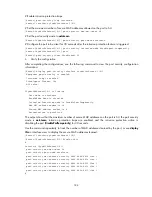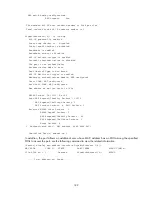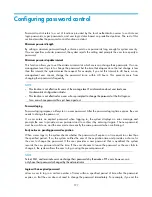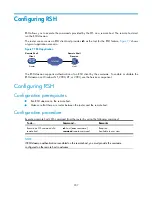
195
Configuring user profiles
A user profile provides a configuration template to save predefined configurations, such as a CAR policy
or a QoS policy. Different user profiles apply to different application scenarios.
The user profile supports working with PPPoE, 802.1X, and portal authentications. It is capable of
restricting authenticated users' behaviors. After the authentication server verifies a user, it sends the
device the name of the user profile that is associated with the user. Then the device applies the
configurations in the user profile if the profile is enabled, and it allows user access based on all valid
configurations. If the user profile is not enabled, the device denies the user access. After the user logs
out, the device automatically disables the configurations in the user profile, and the restrictions on the
users are removed.
Without user profiles, service applications are based on interface, VLAN, or globally, and a policy
applies to any user who accesses the interface, VLAN, or device. If a user moves between ports to
access a device, to restrict the user behavior, you must remove the policy from the previous port and
then configure the same policy on the port that the user uses. The configuration task is tedious and prone
to errors.
User profiles provide flexible user-based service applications because a user profile is associated with a
target user. Every time the user accesses the device, the device automatically applies the configurations
in the associated user profile.
Configuration task list
Task
Remarks
Required
Required
Required
Creating a user profile
Configuration prerequisites
Before you create a user profile, complete the following tasks:
•
Configure authentication parameters on the device.
•
Perform configurations on the client, device, and authentication server (for example, username,
password, authentication scheme, domain, and binding a user profile with a user).
















































